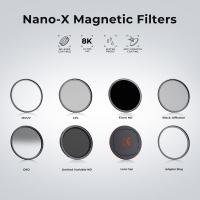What Is The Specimen On A Microscope ?
The specimen on a microscope refers to the object or sample that is being observed or examined under the microscope. It can be anything from a biological sample, such as cells or tissues, to a mineral or a piece of material. The specimen is typically placed on a glass slide or a specialized microscope slide and is often prepared or treated in specific ways to enhance visibility or highlight certain features. Once the specimen is mounted on the slide, it is placed on the stage of the microscope and can be viewed and analyzed using the various magnification and illumination settings of the microscope. The specimen is an essential component in microscopy as it allows scientists, researchers, and students to study and understand the structure, composition, and behavior of microscopic objects.
1、 Microscope Specimen Preparation Techniques
The specimen on a microscope refers to the object or material that is being observed or analyzed under the microscope. It is the subject of study and examination, allowing scientists, researchers, and students to observe and study its characteristics, structure, and behavior at a microscopic level.
Microscope specimen preparation techniques are crucial in ensuring that the specimen is properly prepared and presented for observation. These techniques involve various steps, such as fixation, staining, sectioning, and mounting, depending on the nature of the specimen and the specific objectives of the study.
Fixation is the process of preserving the specimen's structure and preventing decay or degradation. It involves treating the specimen with chemicals or freezing it to immobilize its components. Staining is often used to enhance contrast and highlight specific structures or components within the specimen. Different staining techniques, such as simple staining, differential staining, or immunostaining, can be employed depending on the desired outcome.
Sectioning is the process of cutting the specimen into thin slices, allowing for a more detailed examination of its internal structures. This technique is commonly used in histology and pathology studies. Mounting involves placing the prepared specimen onto a slide and covering it with a coverslip to protect it and provide a flat surface for observation.
In recent years, there have been advancements in microscope specimen preparation techniques. For example, new staining methods have been developed to improve the visualization of specific cellular components or molecules. Additionally, techniques such as cryosectioning, which involves freezing the specimen before sectioning, have become more widely used, allowing for the preservation of delicate structures and better visualization of dynamic processes.
Overall, microscope specimen preparation techniques play a crucial role in enabling scientists and researchers to study and understand the intricate details of microscopic structures and processes. These techniques continue to evolve and improve, providing new insights and expanding our understanding of the microscopic world.

2、 Types of Microscope Specimens
The specimen on a microscope refers to the object or material that is being observed or analyzed under the microscope. It is the subject of study and examination, allowing scientists, researchers, and students to explore its intricate details and characteristics at a microscopic level. The type of specimen that can be observed under a microscope is vast and diverse, ranging from biological samples to inorganic materials.
In the field of biology, specimens commonly include cells, tissues, and microorganisms. These can be obtained from various sources such as plants, animals, or humans. By examining these specimens, scientists can gain insights into their structure, function, and behavior, leading to a better understanding of biological processes and phenomena.
In addition to biological specimens, microscopes are also used to analyze inorganic materials. This includes minerals, metals, and other non-living substances. By studying the composition and structure of these materials, scientists can determine their properties, identify impurities, and even develop new materials with enhanced characteristics.
With advancements in technology, the range of specimens that can be observed under a microscope has expanded. For instance, electron microscopes allow for the examination of specimens at an even higher resolution, enabling scientists to study nanoscale structures and particles. This has opened up new avenues of research in fields such as nanotechnology and materials science.
In recent years, there has been a growing interest in studying living specimens in their natural environment. This has led to the development of techniques such as live cell imaging, which allows for the observation of dynamic processes within cells and organisms. By studying specimens in their natural state, scientists can gain a more comprehensive understanding of their behavior and interactions.
In conclusion, the specimen on a microscope can vary widely, encompassing biological samples, inorganic materials, and even nanoscale structures. The ability to observe and analyze these specimens at a microscopic level has revolutionized scientific research and has led to numerous discoveries and advancements in various fields. As technology continues to evolve, the range of specimens that can be studied under a microscope will likely expand, further pushing the boundaries of scientific knowledge.

3、 Specimen Mounting and Staining Methods
The specimen on a microscope refers to the object or material that is being observed or studied under the microscope. It is the sample that is placed on the microscope slide and viewed through the lenses of the microscope. Specimens can vary widely depending on the field of study, ranging from biological samples such as cells, tissues, and microorganisms, to non-biological samples like minerals, crystals, and thin films.
Specimen mounting and staining methods are crucial steps in preparing the specimen for microscopic examination. Mounting involves placing the specimen on a microscope slide and securing it in place using a mounting medium, such as a liquid or a resin. This ensures that the specimen remains in position and can be easily manipulated under the microscope. Staining, on the other hand, involves applying dyes or stains to the specimen to enhance its visibility and highlight specific structures or components.
The choice of mounting and staining methods depends on the nature of the specimen and the specific objectives of the study. For biological specimens, various techniques are employed to preserve the sample, such as fixation with chemicals, freezing, or embedding in paraffin wax. Staining methods can include simple dyes that highlight cellular structures, or more complex techniques like immunohistochemistry, which uses antibodies to detect specific proteins or molecules within the specimen.
In recent years, there have been advancements in specimen mounting and staining methods. For example, the development of fluorescent dyes and markers has allowed for more precise visualization of specific molecules or structures within the specimen. Additionally, techniques such as confocal microscopy and electron microscopy have provided researchers with higher resolution and three-dimensional imaging capabilities, allowing for more detailed analysis of specimens.
Overall, specimen mounting and staining methods play a crucial role in microscopy, enabling researchers to observe and analyze specimens at a microscopic level. These techniques continue to evolve and improve, providing scientists with valuable tools to explore and understand the intricate details of the microscopic world.

4、 Specimen Preservation and Storage
The specimen on a microscope refers to the object or material that is being observed or studied under the microscope. It is the sample that is placed on the microscope slide and examined using the magnification and resolution capabilities of the microscope. The specimen can vary depending on the field of study and the specific research or analysis being conducted.
In the context of specimen preservation and storage, it is crucial to handle and store specimens properly to maintain their integrity and ensure accurate results. Specimen preservation involves techniques and methods to prevent degradation, decay, or contamination of the sample. This is particularly important for biological specimens, such as cells, tissues, or organisms, which are often delicate and prone to deterioration.
Proper preservation and storage of specimens involve several key steps. First, the specimen should be collected and handled carefully to minimize damage or alteration. It should then be appropriately fixed or preserved using suitable techniques, such as chemical fixation or cryopreservation, depending on the nature of the specimen.
Once preserved, the specimen needs to be stored in optimal conditions to maintain its quality. This typically involves storing the specimen at specific temperatures, humidity levels, and lighting conditions. For example, biological specimens are often stored in freezers or liquid nitrogen tanks to maintain their viability.
In recent years, there has been a growing emphasis on the use of digital imaging and virtual microscopy in specimen preservation and storage. This approach allows for the creation of high-resolution digital images of specimens, which can be stored electronically and accessed remotely. Digital preservation not only reduces the need for physical storage space but also enables easy sharing and collaboration among researchers.
In conclusion, the specimen on a microscope is the sample being observed or studied. Specimen preservation and storage are essential to maintain the integrity of the sample and ensure accurate results. Proper handling, fixation, and storage techniques are crucial for preserving specimens, particularly in the case of biological samples. The use of digital imaging and virtual microscopy has also emerged as a valuable tool in specimen preservation and storage, offering new possibilities for research and analysis.






























There are no comments for this blog.